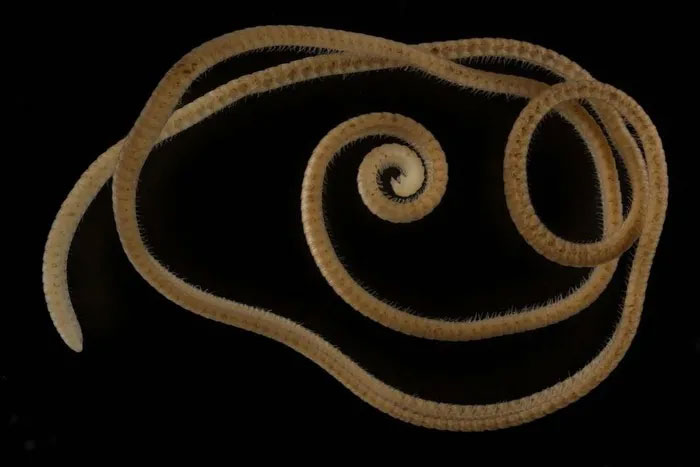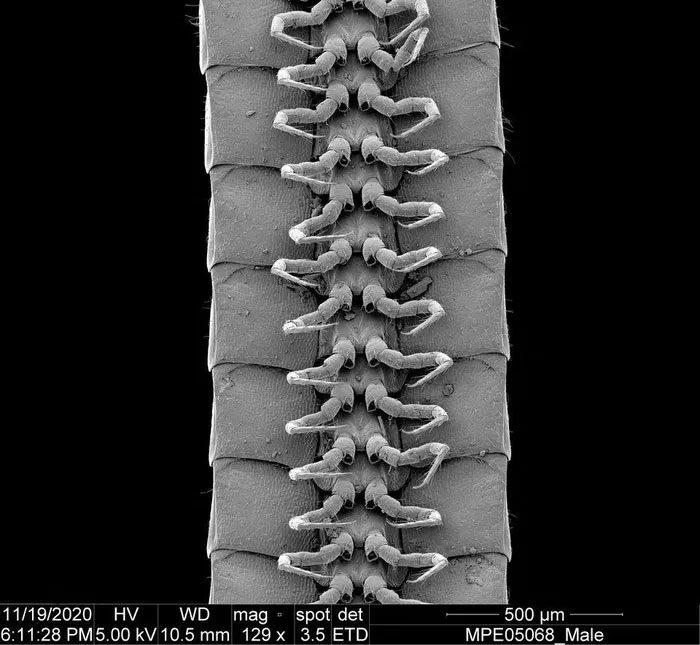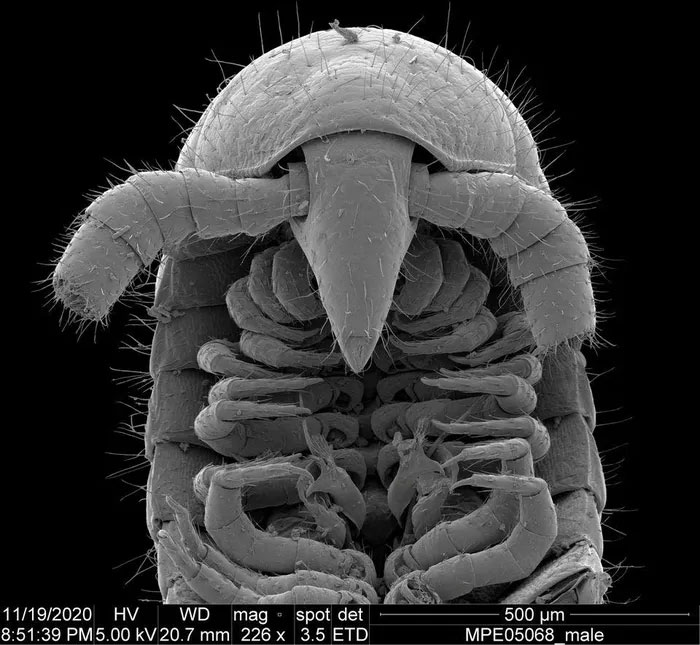During deep exploratory drilling in a mining area in Australia, scientists discovered a “marvel of evolution,” a millipede that possesses the most legs in the world, totaling 1,306 legs.

A female millipede identified as Eumillipes persephone, found deep underground in Australia. (Photo: Reuters).
The millipede species (derived from Latin: mille meaning a thousand and pes meaning foot) typically measures about 95 mm in length and 0.95 mm in width, with a conical head, a beak-like mouth, and large antennae.
According to a study published in the journal Scientific Reports on December 16, scientists reported that the newly discovered millipede is blind and named it Eumillipes persephone. A few individuals of this species were found living nearly 60 meters underground. Females have more legs than males.
Insect biologist Paul Marek from Virginia Tech, the lead author of the study, stated: “It has never been known that a millipede could actually have 1,000 legs, even though the name millipede means ‘thousand feet.’”

A male specimen of the newly identified millipede species Eumillipes persephone discovered underground. (Photo: Reuters).
Co-author Bruno Buzatto, a chief biologist at the environmental consulting firm Bennelongia in Perth, Australia, added: “In my opinion, this is a beautiful animal, a wonder of evolution.”
“It represents the maximum length found to date in millipedes, which are among the first animals to conquer land. This species has managed to adapt to living tens of meters underground in a dry and harsh landscape where it is very difficult to find any of its kind,” Dr. Buzatto further explained.
So far, the most legged animal known is a millipede in California named Illacme plenipes, with 750 legs.
Researchers speculate that the evolution of having many legs has benefited the Eumillipes species.
Dr. Buzatto noted: “We believe that a large number of legs provides an advantage in traction to propel their bodies forward through small crevices and breaks in the ground where they live.”
This species lives completely in darkness in an underground habitat filled with iron and volcanic rock. Lacking eyes, it uses other senses such as touch and smell to perceive its surroundings. It belongs to a family of fungus-eating millipedes, so researchers suspect that fungi are their food source.
It was discovered in the Goldfields-Esperance region of Western Australia, in an area where miners are extracting gold and minerals such as lithium and vanadium. Four Eumillipes specimens were described in the study, and four other specimens were found.
One of the mature females described in the study has 1,306 legs, while another has 998. One of the two mature males has 818 legs, and the other has 778. None of the specimens are still alive.

The head and reproductive organs of a newly identified blind male millipede Eumillipes persephone found deep underground in Australia. (Photo: Reuters).
The uneven number of legs among millipede species is due to their molting process, shedding their tough outer layer, developing, and adding segments of four legs throughout their lives.
Dr. Buzatto stated: “It is quite common for individuals to have more legs as they molt, so older individuals have more legs than younger ones.”
Typically, millipedes have around 100 to 200 legs. Following millipedes, centipedes have the next highest number of legs, reaching up to 382. Centipedes have one pair of legs per body segment, while millipedes have two pairs of legs.
Millipedes, slow-moving arthropods related to centipedes, insects, and crustaceans, first appeared over 400 million years ago.
About 13,000 millipede species are known today, living in various environments and feeding on decaying plant matter and fungi. They play a crucial role in the ecosystem by breaking down the material they consume and releasing carbon, nitrogen, and simple sugars.
Associate Professor Marek stated: “These nutrients can then be utilized by future generations of life.”


















































